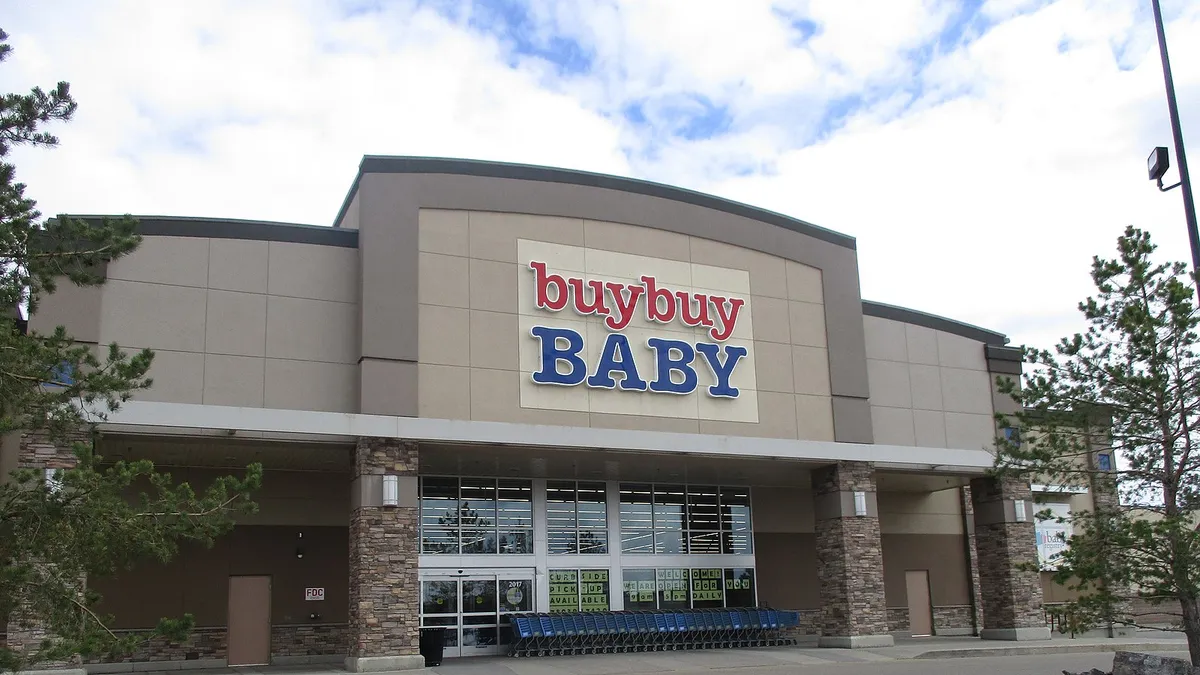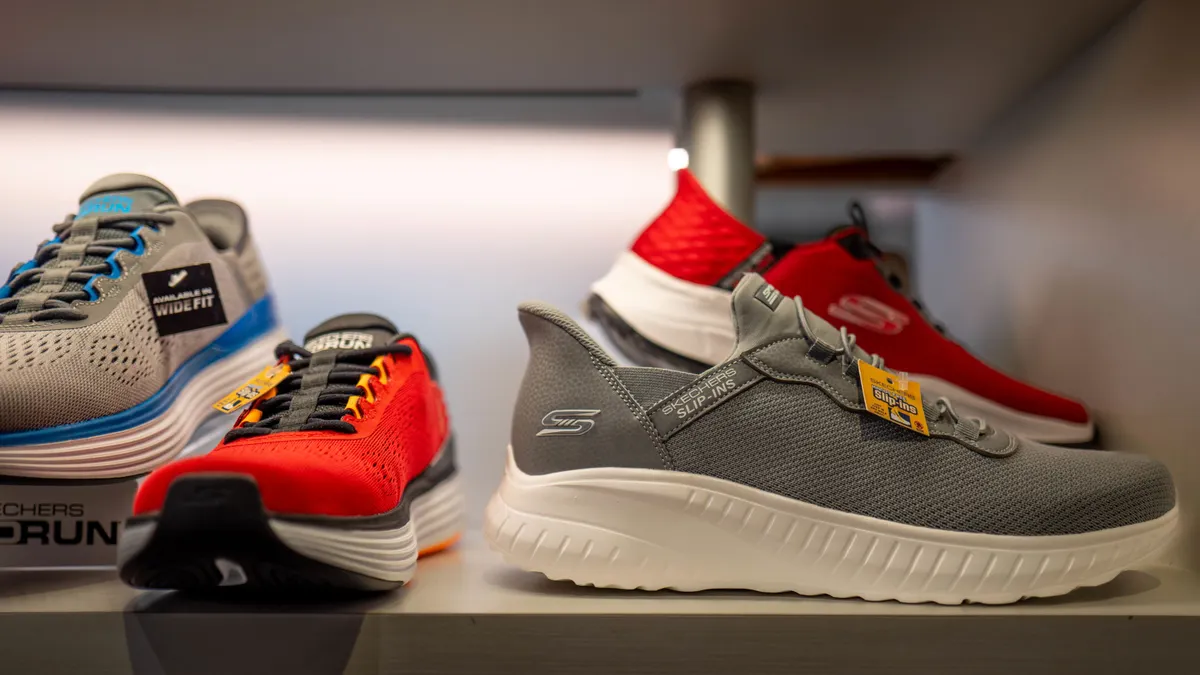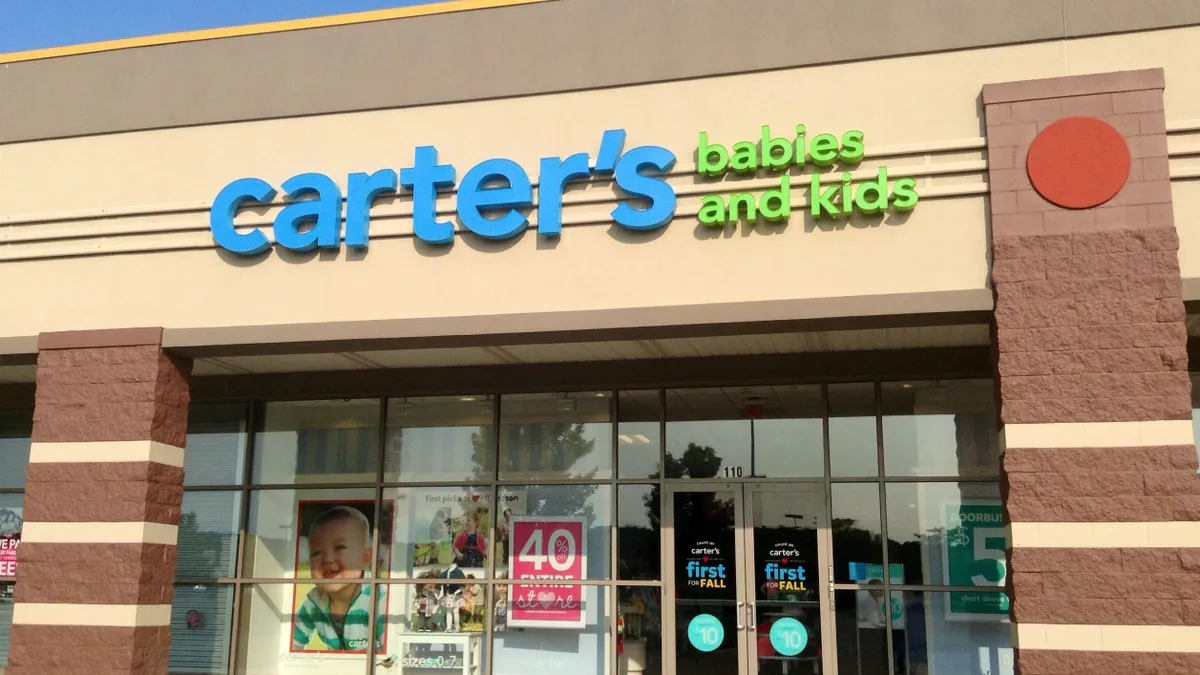There's no denying it: Selling at department stores is still a must for many accessible luxury brands.
Historically, these brands and retailers have profited from department stores being the go-to destinations for a unique assortment of luxury goods and personalized services, such as style consultants and makeup tutorials. Given the sheer amount of foot traffic that department stores pull in, stocking inventory at these locations can help introduce brands to new shoppers.
But modern advances in retail — from e-commerce to off-price chains — have changed the long-standing relationship between luxury brands and department stores.
As more brands look for growth opportunities outside of their traditional distribution channels — such as launching their own websites and expanding the reach of their retail stores — this could cause tension in what was largely a congenial and symbiotic relationship.
How luxury brands are growing
Corresponding with a growth of the luxury retail market in recent years, brands have looked for ways to present more options to consumers, outside of department stores.
Michel Kors has been the poster child for the rapid growth of luxury brands since it went public in 2011. Pacing after competitor Coach in the "accessible" handbag and accessories market, the company has opened nearly 200 stores in North America since its IPO, with 343 open in North America as of March 28 this year.
But this week, Michael Kors announced a shift in its strategy. Comparable sales at its North American stores during its recent quarter fell 8.5%, a drop that the brand attributed partly to an increased consumer preference to its cheaper cross-body bags over larger — and pricier — styles. The brand said that it plans to scale back the number of its offerings at department, a move made in part to reduce the amount of its merchandise being placed on sale by its wholesale partners.
“We’d like to have less inventory in the [department] stores, and have less of our brand appearing on sale, in particular, in that channel of distribution. So you’ll see that pullback happen,” Michael Kors CEO John Idol said during a conference call to analysts.
While it pulls out of department stores, Michael Kors said that it would be introducing a broader range of products this spring, as it looks to attract shoppers looking for products that go beyond its signature gold watches and leather bags.
The move to diversify their product lines is becoming all the more important for these luxury brands as their foundational handbag and accessories offerings continue to lose their appeal to customers. According to Barclays, sales of premium handbags and accessories are predicted to increase only 3% this year, compared to an 8% growth last year and 16% growth in 2012.
Another accessible luxury brand like Michael Kors — Kate Spade & Company — is looking to reach customers through new product categories and new stores. While reporting a 28% increase of direct to consumer sales in the fourth quarter last year, the retailer said it added 20 retail and 16 outlet stores in the U.S. in 2014, ending the fourth quarter with 108 retail stores and 58 outlets. It then laid out plans to broaden its product assortment with different categories including homeware, swimwear, and childrenswear, with the goal of attracting more customers to its brand through a diverse range of channels.
While the retailer closed its Kate Spade Saturday and Jack Spade brand stores this year, it recently announced a home furnishing line, cookware line, and an activewear line under the Kate Spade New York umbrella.
“We thought that now was the time to take the brand to being a lifestyle brand rather than just a fashion brand,” Deborah Camplin, Kate Spade New York senior vice president of home design, told the Washington Post when talking about the brand’s new home furnishing lines.
While Kate Spade’s cookware line will be sold exclusively through Macy’s and online, its home furnishing line, which includes collaborations with manufacurers EJ Victor and Jaipur Rugs, will be sold only online — understandable given the difference in square feet between displaying a couch on the showroom versus showing off a cute cookie cutter.
Along with avoiding discounting that they have no control over, brands have found room to experiment with new product offerings — something department stores are fairly adverse to — by opening their own stores. Steven Dennis, founder of SageBerry Consulting and a former SVP of strategy, business development and marketing at Neiman Marcus, points out that department stores are less likely to stock new products, as their success is less-than-guaranteed.
“If you’re the Louis Vuitton store and you have all this square footage, you can decide what to highlight and take a long-term view with growing new businesses,” Dennis told Retail Dive in an interview. “It’s much harder for the department store to take that kind of risk.”
A new American focus
While the sales growth of luxury handbags and accessories is slowing down, the larger luxury market is expected to grow 6.6% in the U.S. this year, largely on the rise in spending among millennials and one-percenters.
Traditionally many luxury brands have looked to Chinese nationals vacationing in the U.S. for a boost in sales, which come from both their own stores and department stores’ famous flagship locations like Macy’s Herald Square. But current economic woes in the country, including a sharp devaluation of the Chinese yuan and a shrink in discretionary spending, have forced Chinese tourists to cut down on vacations and spending while on vacation — leading luxury brands to look elsewhere for new customers.
The New York Times reports that luxury brands have started looking at the U.S. as these Chinese economic woes impact sales for some luxury brands and department store. Many brands are opening shops to cater to the new American rich in industries like technology and energy, sectors that have boomed in cities like Houston, Dallas, and San Jose. According to Credit Suisse, the number of millionaires in the U.S. since 2013 has grown by 1.6 million — a lot more than China’s 90,000 new millionaires in that same period.
While high-end department stores might have helped luxury brands like Kate Spade and Salvatore Ferragamo reach smaller numbers of high-spending customers in these locations before the growth in higher-income residents, brands are now opening their own stores in these areas.
“Before, growth was really focused on the BRICS,” president of Hermes U.S. Robert Chavez told New York Times, referring to the five major emerging economies of Brazil, Russia, India, China and South Africa (BRICS). “But the world changes constantly, and the U.S. is now a strong foundation.”
Opening their own stores has the added benefit of letting brands have complete control over the user experience and stock a wider assortment of their merchandise. As more department stores pressure brands to stock more unique products in traditional categories — and brands themselves continue to open their own stores — Dennis predicts that the negotiations between brands and department stores will intensify in the future.
Department stores expand into off-price
This greater autonomy brands are building outside of department stores may be even more important in light of the growing number of department stores entering the off-price sector.
Just this year, Macy’s announced that it would be opening Macy’s Backstage, while Lord & Taylor said that it would be venturing into the off-price market with the launch of Find @ Lord & Taylor. Both outlets are aimed at attracting millennial consumers who otherwise wouldn’t visit these retailers’ full-price stores, with the hope that they will transition into buying full-price once their income levels grow.
But many retail observers are doubtful that this transition will fully transpire, with critics saying that these off-price ventures have more of a risk of devaluing Macy’s and Lord & Taylor’s brands than helping them in the long run.
These off-price openings put accessible luxury brands in a tough position. While higher-end luxury brands like Gucci and Prada are rarely found in department stores, more accessible luxury brands like Vince have made it a goal this year to reduce their off-price sales and transition to more full-price sales.
“While we will continue to generate a portion of our sales in the off-price channel, our plan is to reduce our off-price penetration and increase full-price selling for the long-term health of our brand,” Vince CEO Jill Granoff said in a talk with shareholders outlining the brand’s strategy for 2015.
In the past, the off-price concept worked for both parties, as there weren’t too many off-price stores and the balance between these and full-price locations was symbiotic enough to maintain the status quo. But as the off-price market expands, Dennis questions whether department stores can keep investing in off-price stores without diluting their overall brand — and that of the luxury brands they carry.
“It’s a tough balance to maintain and I just think that with all the stores that are planned, there’s a high risk,” Dennis said. “I don’t think there’s a huge risk right this second, but I don’t see how many of these stores the market can support without diluting the luxury part of it.”
Coming soon: An 'online luxury turf war'?
While some department stores have targeted off-price stores as an avenue for growth, many accessible luxury brands are increasingly focused on a new channel, one they have been painfully slow to adapt to — e-commerce.
Traditionally, many luxury brands have avoided e-commerce operations altogether, citing the cost and complexity of selling their products online, instead outsourcing their operations — if they have any at all. But as Bernstein analyst Mario Ortelli predicts that up to 9% of luxury sales will happen online by 2020, some brands have had a change of heart, with LVMH’s Fendi, Burberry, and Hugo Boss, among others, moving their online operations in-house in recent years.
While these brands were reliant on department stores’ websites in the past, establishing their own sites has helped brands create their own unique online experience and control their marketing and branding presentation online. Luxury brands' move into e-commerce coincides with the consolidation and founding of luxury Web distributors like Net-a-Porter, which recently merged with Yoox to form the Yoox Net-a-Porter Group. With all these new competitors online, John Guy, an analyst at Mainfirst AG, told Business of Fashion that luxury e-commerce is shaping up to be an “online luxury turf war."
Many luxury brands are also reporting that a dramatic amount of in-store sales — somewhere between 60% to 70%, according to Dennis — are being influenced by digital, whether that means shoppers are browsing online sites before visiting a location or doing product research on the latest "it" purse while in-store. Being distant from these moments can hurt a brand.
“If you don’t have your own well-presented, well-thought out and compelling digital presence, mostly represented in your website but other channels as well, then you are missing out on the opportunity to reach consumers in a compelling way,” said Dennis. “In a practical matter, you are also failing to reach out to consumers the way they want to be communicated to."
The shift in shopping dollars from brick-and-mortar to digital is only just now taking hold in luxury retail, but as brands start to grow their online operations — and compete with department stores by opening their own locations in malls — the historically symbiotic relationship with these stores could change.




















